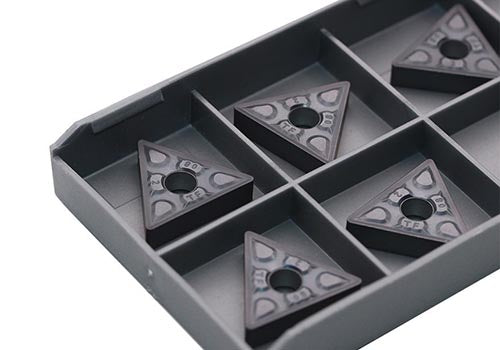
The ABCs of CNC Inserts: An Overview of Materials, Coatings, and Geometry
Share
Introduction
Computer Numerical Control (CNC) machining has revolutionized the manufacturing industry, providing higher accuracy, faster production, and better consistency. One crucial element of CNC machining is the use of inserts, which are replaceable cutting tools that perform various machining operations. CNC inserts are available in different materials, coatings, and geometries, each designed for specific applications. In this blog post, we will provide an in-depth overview of the ABCs of CNC inserts, discussing the materials, coatings, and geometries that you need to know to make the right cutting tool choices for your CNC machining operations.
Materials
CNC inserts are made from various materials, each with unique properties that affect their performance, durability, and cost. It is crucial to understand the properties of each material to make the right choice for your specific machining needs.
Carbide is the most popular material, thanks to its high wear resistance, toughness, and affordability. It is suitable for machining a wide range of materials, including steel, cast iron, and non-ferrous metals. Carbide inserts are also available in different grades, each designed for specific applications, such as roughing, finishing, or high-speed machining.
Ceramic is ideal for high-speed machining, providing superior hardness, heat resistance, and chemical stability. It is suitable for machining hardened steels, nickel-based alloys, and other heat-resistant materials. Ceramic inserts are also available in different grades, each designed for specific applications, such as roughing, finishing, or interrupted cuts.
Cubic boron nitride (CBN) is perfect for hard materials like steel and cast iron, delivering high thermal conductivity, toughness, and wear resistance. CBN inserts are ideal for turning, milling, and boring operations on hardened steel, high-temperature alloys, and other challenging materials.
Diamond is the ultimate material for machining non-ferrous materials like aluminum, copper, and plastics, providing unbeatable hardness, low friction, and high thermal conductivity. Diamond inserts are ideal for turning, milling, and boring operations on non-ferrous metals and other abrasive materials.
Coatings
CNC inserts are also coated with various materials to enhance their performance and durability. Coatings can provide benefits like reducing wear, preventing adhesion, increasing hardness, and improving lubrication. Understanding the properties and benefits of each coating is essential to make the right choice for your specific machining needs.
Titanium nitride (TiN) is the most popular coating thanks to its affordability, high hardness, and wear resistance. TiN is suitable for machining a wide range of materials, including steel, cast iron, and non-ferrous metals.
Titanium carbonitride (TiCN) provides better adhesion resistance and toughness than TiN. It is suitable for machining hardened steels, nickel-based alloys, and other heat-resistant materials.
Titanium aluminum nitride (TiAlN) offers improved oxidation and heat resistance compared to TiN and TiCN. It is suitable for high-temperature machining applications, such as machining titanium and other high-temperature alloys.
Diamond-like carbon (DLC) is perfect for dry machining, providing excellent lubrication and wear resistance. It is suitable for machining a wide range of materials, including steel, cast iron, and non-ferrous metals.
Geometry
CNC inserts come in different geometries, each designed for specific machining operations, materials, and cutting conditions. Understanding the features and benefits of each geometry is crucial to make the right choice for your specific machining needs.
Square geometry is ideal for roughing operations, providing a high material removal rate and good chip control. It is suitable for machining a wide range of materials, including steel, cast iron, and non-ferrous metals.
Triangle geometry is suitable for both roughing and finishing operations, providing good chip control and high precision. It is suitable for machining a wide range of materials, including hardened steels, nickel-based alloys, and other heat-resistant materials.
Round geometry is perfect for finishing operations, providing a smooth surface finish and high precision. It is suitable for machining a wide range of materials, including steel, cast iron, and non-ferrous metals.
Diamond geometry is ideal for facing and turning operations, providing good chip control and high precision. It is suitable for machining a wide range of materials, including aluminum, copper, and other non-ferrous metals.
Conclusion
CNC inserts are an essential element of CNC machining, and choosing the right inserts can make a significant difference in the quality, efficiency, and cost of your machining operations. By understanding the ABCs of CNC inserts - materials, coatings, and geometry - you can make informed decisions when selecting inserts for your specific machining needs. Remember, the right insert can help you achieve better performance, longer tool life, and higher productivity.




